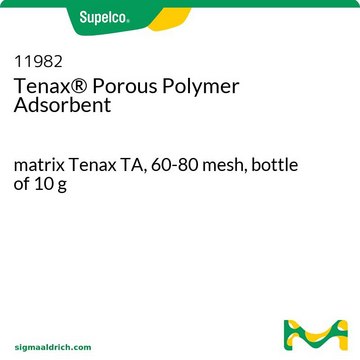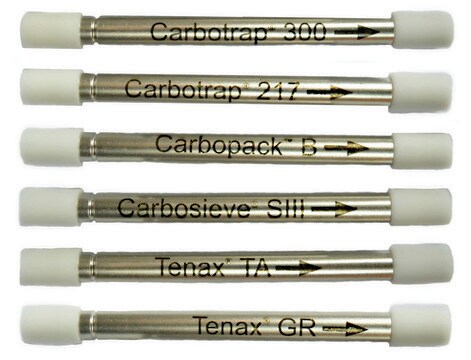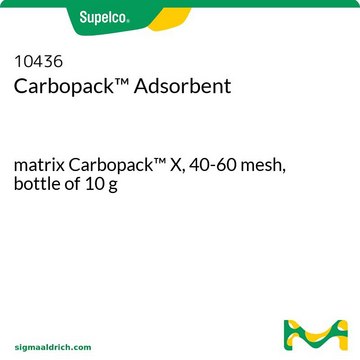21009-U
Tenax® Porous Polymer Adsorbent
matrix Tenax TA, 80-100 mesh, bottle of 10g
Synonym(s):
polymeric adsorbent, XAD7, 20-60 mesh
About This Item
Recommended Products
Product Name
Tenax® Porous Polymer Adsorbent, matrix Tenax TA, 80-100 mesh, bottle of 10 g
form
solid
Quality Level
packaging
bottle of 10 g
parameter
350 °C temp. limit
surface area
~35 m2/g
matrix
Tenax TA
particle size
80-100 mesh
density
~0.29 g/mL (free fall density)
Looking for similar products? Visit Product Comparison Guide
General description
For more information about any of our adsorbents, please visit sigma-aldrich.com/adsorbents
Application
Legal Information
Signal Word
Warning
Hazard Statements
Precautionary Statements
Hazard Classifications
Eye Irrit. 2 - Skin Irrit. 2 - STOT SE 3
Target Organs
Respiratory system
Storage Class Code
11 - Combustible Solids
WGK
WGK 3
Flash Point(F)
Not applicable
Flash Point(C)
Not applicable
Personal Protective Equipment
Choose from one of the most recent versions:
Certificates of Analysis (COA)
It looks like we've run into a problem, but you can still download Certificates of Analysis from our Documents section.
If you need assistance, please contact Customer Support.
Already Own This Product?
Find documentation for the products that you have recently purchased in the Document Library.
Customers Also Viewed
Our team of scientists has experience in all areas of research including Life Science, Material Science, Chemical Synthesis, Chromatography, Analytical and many others.
Contact Technical Service












